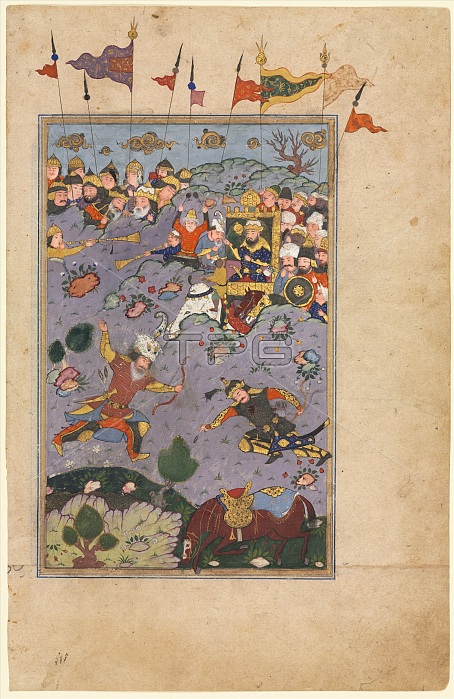
Rustam meets the challenge of Ashkabus, from a Shah-nama (Book of Kings) of Firdausi (Persian, about 934-1020), c. 1590-1600. Iran was losing a battle against Turan and the armies of its assembled allies from India and China. The hero Rustam arrived to pull the Iranian army back from the brink of destruction, slaying the enemy warrior Ashkabus on foot while allowing his horse Rakhsh to rest after a long, hard journey. The vast number of armies involved in the battle is indicated by the many banners that extend beyond the illustration?s top border. This painting was probably produced at Shiraz, one of Iran?s major cultural centers, far to the south of the Safavid capital of Tabriz. Artists and works of art moved back and forth steadily between Shiraz and the Deccan in southwestern India during the 1500s and 1600s. The section of the Shah-nama on the recto is famous for the clever conversational repartee between Rustam and his opponent Ashkabus. When Ashkabus remarked that in choosing not to ride a horse Rustam had signed his own death warrant, Rustam retorted, "Would it be the case then that in your country . . . lions, tigers, and crocodiles [all] ride on horses to battle?" Rustam then brought down the horse of Ashkabus with a single arrow; his next arrow pierced Ashkabus in the chest.
| px | px | dpi | = | cm | x | cm | = | MB |
Details
Creative#:
TOP25282086
Source:
達志影像
Authorization Type:
RM
Release Information:
須由TPG 完整授權
Model Release:
No
Property Release:
No
Right to Privacy:
No
Same folder images:

 Loading
Loading